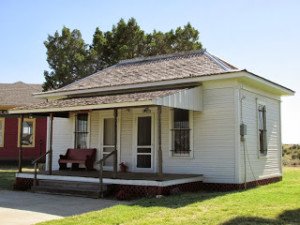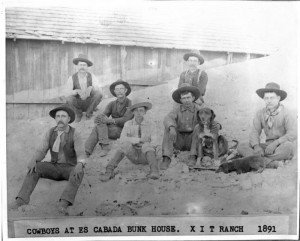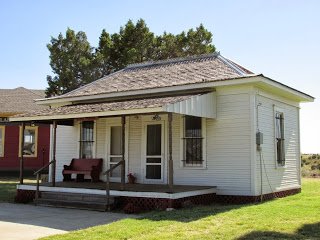When the American Civil War ended, the era of the big western ranches began. There were large ranches prior to the war but not many. The King Ranch of southeast Texas is probably the largest ranch of note prior to the war. Being located in Texas at the time of the war, the King Ranch and it’s owner, Richard King, were indeed involved in the conflict.
Thank you for reading this post, don't forget to subscribe!
King’s ranch was raided several times by Union forces in Texas. They considered it a stopping off site for traveling and resupply for Confederate forces. In fact, Union forces arrived at one time with orders for Kings arrest. Lucky for King he was learned in advance of the raid and fled.
Female Contributions to the Western Expansion / Rancher Women of the Old West
Women were certainly a part of the western frontier and they made very important contributions. There are some interesting stories about the introduction of women on the American western frontier and particularly as wives of ranchers. The women we are referring to here are not the typical cowgirls.
What the frontier woman did do was work hard in difficult settings and contributed in a big way to the civilizing of the west. To understand the settling of the American frontier outside of Hollywood stereotypes, a look at how the wives of ranch owners adapted to their new surroundings is quite enlightening. The presence of someone in the old west who could cause a cowboy to act more gentlemanly had to be appreciated.

For the most part, women married to ranchers were brought into the frontier “after” the male established himself. Conditions were rough in the decade after the Civil War and the man striving to get a herd together and start a ranch had all he could do to provide suitable living conditions for himself.
Most aspiring ranchers thought the conditions just too harsh and dangerous for their wife or new bride. The idea at the time was to establish oneself in the ranching industry and then return to one’s hometown to find yourself a bride, or if you had a wife, make arrangements to take her out west. This was the beginning of adventure for many a frontier woman.
Mrs. Charles Goodnight
In the book “Cattle Kings” by author Lewis Atherton, several observations are made as to the type of woman that a rancher seemed to gravitate towards. For the most part, they chose a like minded wife. The rancher himself was a strong individualist, one of the reasons he turned to ranching in the first place, and many times this was the type of partner they preferred.
A good example was Charles Goodnight, one of the more successful ranchers in the Texas Panhandle region. Before settling in Texas, Goodnight established a ranch in Colorado and married for the first time only after the ranch was operating. Mrs. Goodnight was an adventuresome pioneer woman and the ranch life in Colorado seemed to satisfy her. Everything however was disrupted due to the financial panic of 1873. This bankrupted the Goodnights. While Charles took care of the ranch debts he sent his wife to live in California.
Rancher Charles Goodnight planned on reestablishing himself of which he eventually did in the area of Pala Duro Canyon, just outside present day Amarillo, Texas.
Not shying away from adventure it seems that Mrs. Goodnight spent much of her time as a frontier woman patching the clothes of cowboys and tending to the small and non-luxurious home. Mrs. Goodnight did enjoy adventure and didn’t shy away from the hardship remote living brought. Futures were not guaranteed. The hope was that after a few years of hard work in inhospitable surroundings, prosperity would eventually come and the days ahead would be better. Ranching was a gamble and the rancher preferred a wife who understood the situation.
How successful a rancher was pretty much dictated what the rancher’s wife had to endure. The wives of some of the bigger ranchers no doubt had workers present who do a lot of the chores for them. In other cases, life could be tough. Cooking, sewing, fetching what water was available for washing and in many cases helping her husband with regular cowboy duties could be required. It really was a life of voluntary sacrifice with the hope of better days ahead.
Alice Littlefield
Another western rancher of the post Civil War era was George Littlefield. The ranch / farm was in the area of Gonzales Texas.
In the year 1869 the Littlefields were struggling earning about $150 per year by farming. Littlefield was an ex Confederate officer and Mrs. Littlefield came from a southern plantation and was accustomed to rural life. Becoming a frontier woman may not have represented that big of a change.

Alice Littlefield lived a tough life on the Littlefield farm but circumstances changed dramatically after they became involved in cattle ranching. The Littlefields represented what the successful, and perhaps lucky, rancher could achieve.
Over the early 1870’s Littlefield drove cattle to Kansas rail heads and expanded his enterprise. Over the years he had several ranches throughout Texas and into New Mexico with the LIT being one of his biggest. At one time his cattle branded LFD grazed over an area of Eastern New Mexico the size of the state of Rhode Island.
Alice enjoyed being involved with philanthropy and was responsible to a large degree for George’s many charitable contributions. The Littlefields were one of the founders of the University of Texas in Austin. The Littlefields had two children but unfortunately both were lost during infancy. Most likely as a result of their misfortune they were very close to his extended family, paying for the college education for all of his many nieces and nephews.
You may also enjoy the Trips Into History Stories on the links below…
The National Ranching Heritage Center
Battle of Pala Duro Canyon Texas
Excellent Venues to Learn About the Frontier Ranch Life
The National Cowboy Western & Heritage Museum- Oklahoma City, OK
The King Ranch Museum- South of Corpus Christi, Texas
The National Ranching Heritage Center- Lubbock, TX
MacGregor Ranch Museum- Estes Park, CO
The Farm and Ranch Museum- Elk City, OK
New Mexico Farm and Ranch Heritage Museum- Las Cruces, NM
(Article and photos copyright Trips Into History)

